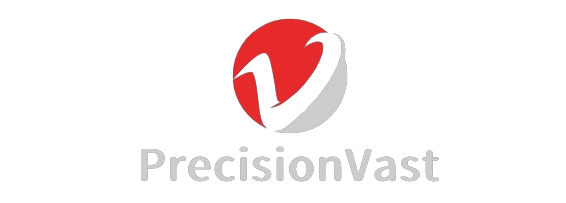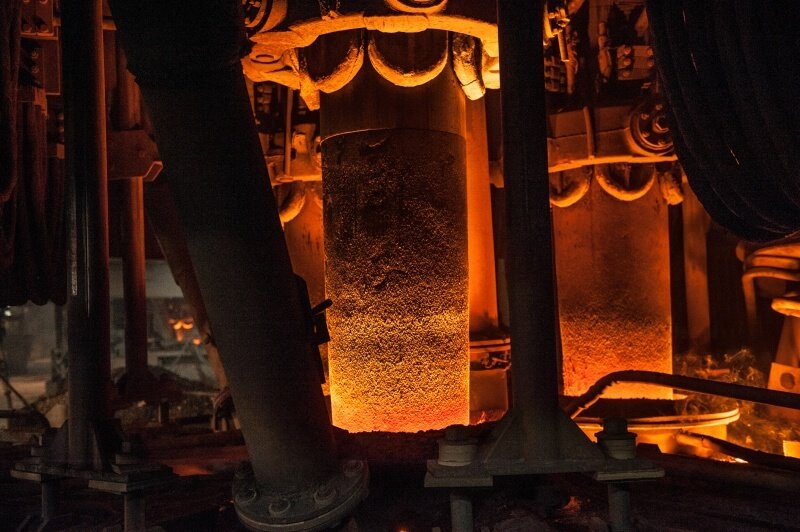As a design engineer, you face the challenge of creating an aluminum part that is not only functional but also optimized for die casting. Overlooking key principles leads to costly tooling reworks, production delays, and parts that fail under stress. You’re navigating a minefield of potential issues: will uneven wall thickness cause defects, or is the draft angle sufficient for easy ejection?
This concise aluminum die casting design guide is your blueprint for success. By mastering these nine fundamental considerations, you can confidently design parts that are cost-effective, durable, and highly manufacturable. Let’s get your design right the first time.
1. Parting Line in Your Aluminum Die Casting Design Guide
The parting line is the precise interface where the two halves of the die meet to form the casting cavity. This seam defines the part’s outer profile and affects tooling complexity and cost.
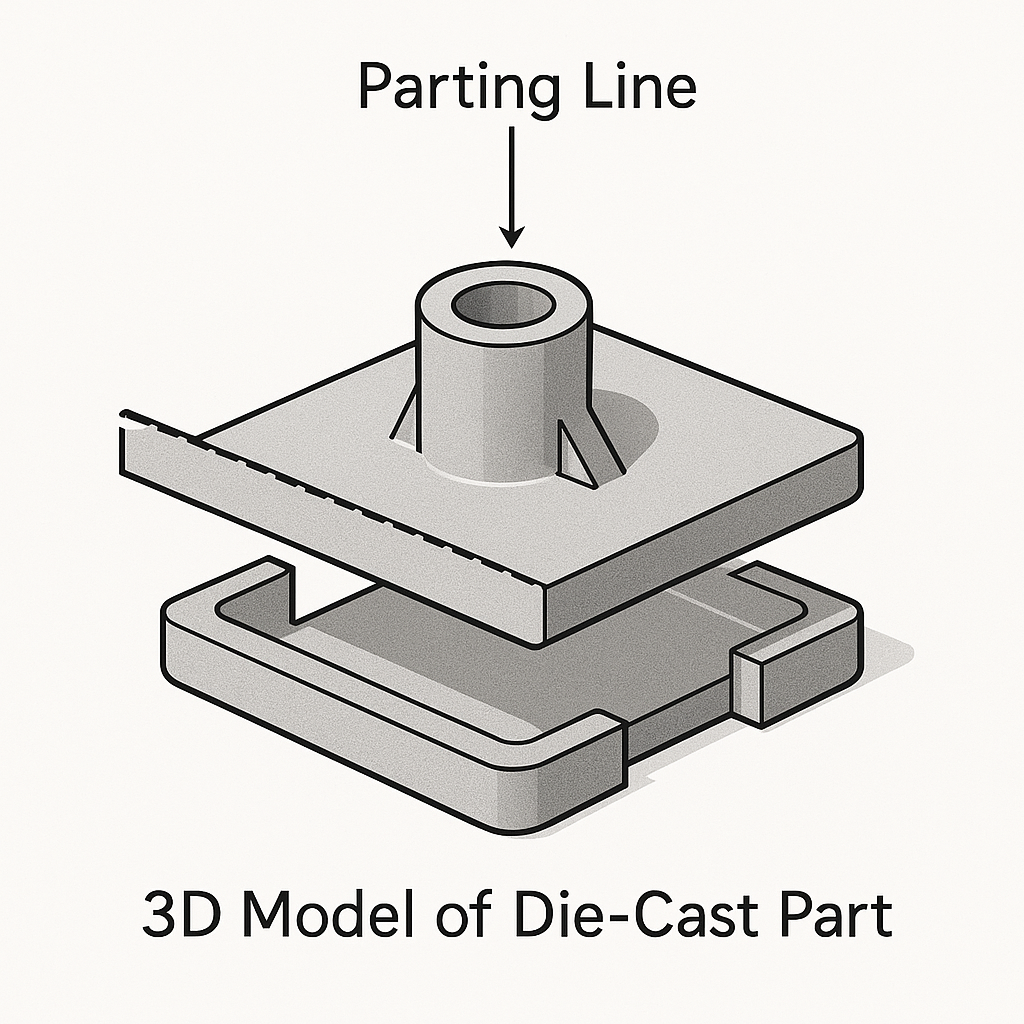
What is a parting line?
The parting line’s location influences the direction of mold opening and the placement of other features like ejector pins. Think of it this way: a simple, flat parting line is always more cost-effective than a complex, stepped one. Its placement impacts:
- Flash location and removal
- Tooling cost and complexity
- Final part aesthetics
How does it affect flash?
Flash, or excess material, inevitably forms along the parting line and must be trimmed. Placing this line on straight, accessible edges makes the secondary trimming process much simpler. An irregular parting line complicates flash removal and increases labor costs.
Your parting line strategy
Key Takeaway: Strategically placing your parting line simplifies flash removal, reduces secondary machining costs, and improves your part’s quality.
| Consideration | Best Practice | |
|---|---|---|
| Location | On flat, easy-to-trim edges | |
| Complexity | Keep it as straight as possible |
2. Shrinkage in Your Aluminum Die Casting Design Guide
Shrinkage is the natural contraction of molten aluminum casting material as it cools and solidifies within the die. This predictable change, typically 0.4-0.6%, must be factored into your design.
How does shrinkage affect your part?
This contraction can be both a help and a hindrance. But that’s not all… while shrinkage helps the part release from the outer die walls, it also causes it to grip tightly onto any internal cores or features.
Using drafts to counter shrinkage?
To counteract this gripping effect, you must add a draft or taper to all internal features. This ensures the part can be smoothly ejected without damage. Benefits of accounting for shrinkage include:
- Easier part ejection from cores
- Prevention of surface drag marks
- Reduced stress on the die and part
Managing shrinkage effectively
Key Takeaway: Properly accounting for metal shrinkage with features like draft angles is essential to prevent part damage during ejection and ensure dimensional accuracy.
| Factor | Typical Range | Solution | |
|---|---|---|---|
| Shrinkage Rate | 0.4% – 0.6% | Incorporate draft angles | |
| Effect on Cores | Grips internal features | Increase draft on inside walls |
3. Draft in Your Aluminum Die Casting Design Guide
A draft is a slight taper applied to the surfaces of a part that are parallel to the direction of the die’s movement. It is a critical feature that ensures the part can be cleanly ejected from the mold.
What is a draft angle?
A draft angle allows the part to release from the mold with minimal friction. Here’s the deal: without a draft, the part would scrape against the mold walls during ejection, causing surface defects and potentially damaging the tool.
Why is draft non-negotiable?
Ejecting a part with zero draft is nearly impossible without causing damage. Different features require different draft angles to ensure a smooth release.
- Outside Walls: Require a minimal draft.
- Inside Walls: Need a larger draft angle as the part shrinks onto them.
- Holes: Require significant draft to prevent gripping the core pins.
Implementing proper draft
Key Takeaway: Including a draft is not optional; it is fundamental for damage-free ejection, better surface finish, and efficient production cycles.
| Feature | Draft Requirement | |
|---|---|---|
| External Walls | Small angle (e.g., 1-2 degrees) | |
| Internal Walls/Holes | Larger angle (e.g., 2-5 degrees) |
4. Wall Thickness in Your Aluminum Die Casting Design Guide
Maintaining a uniform wall thickness throughout your part is one of the most important principles for successful die casting. It ensures consistent metal flow and solidification, which prevents many common defects.
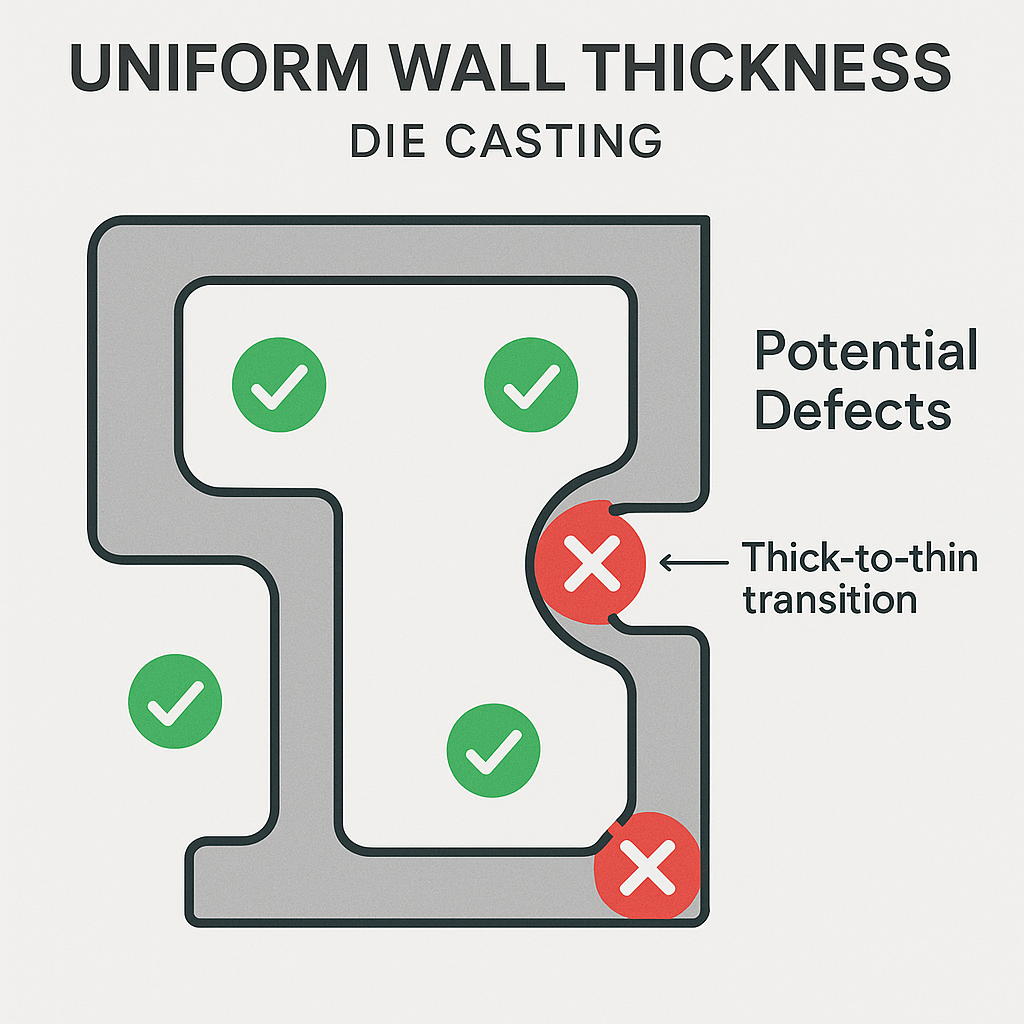
Why are uniform walls critical?
Uniform walls promote smooth molten metal flow and even cooling. What happens if they aren’t? Non-uniform sections cool at different rates, creating internal stresses that can lead to warping and cracking.
What are the risks of poor wall design?
Designing walls that are too thin or too thick introduces significant risks. It’s a balancing act to achieve optimal results.
- Too Thin: Can cause incomplete filling (misruns) or warping.
- Too Thick: Leads to slow solidification, material waste, and sink marks.
- Non-Uniform: Causes uneven cooling and internal stress.
Optimizing your walls
Key Takeaway: Aim for the thinnest, most uniform wall thickness possible that still meets your part’s strength requirements to ensure a lightweight, defect-free casting.
| Wall Type | Consequence | |
|---|---|---|
| Too Thin | Prone to warping & filling issues | |
| Too Thick | Increases cost & risk of defects | |
| Uniform | Optimal strength & manufacturability |
5. Fillets and Radii in Your Aluminum Die Casting Design Guide
Fillets and radii are rounded corners that eliminate sharp internal and external edges on your part. They are crucial for strengthening the component and improving the die-casting process.
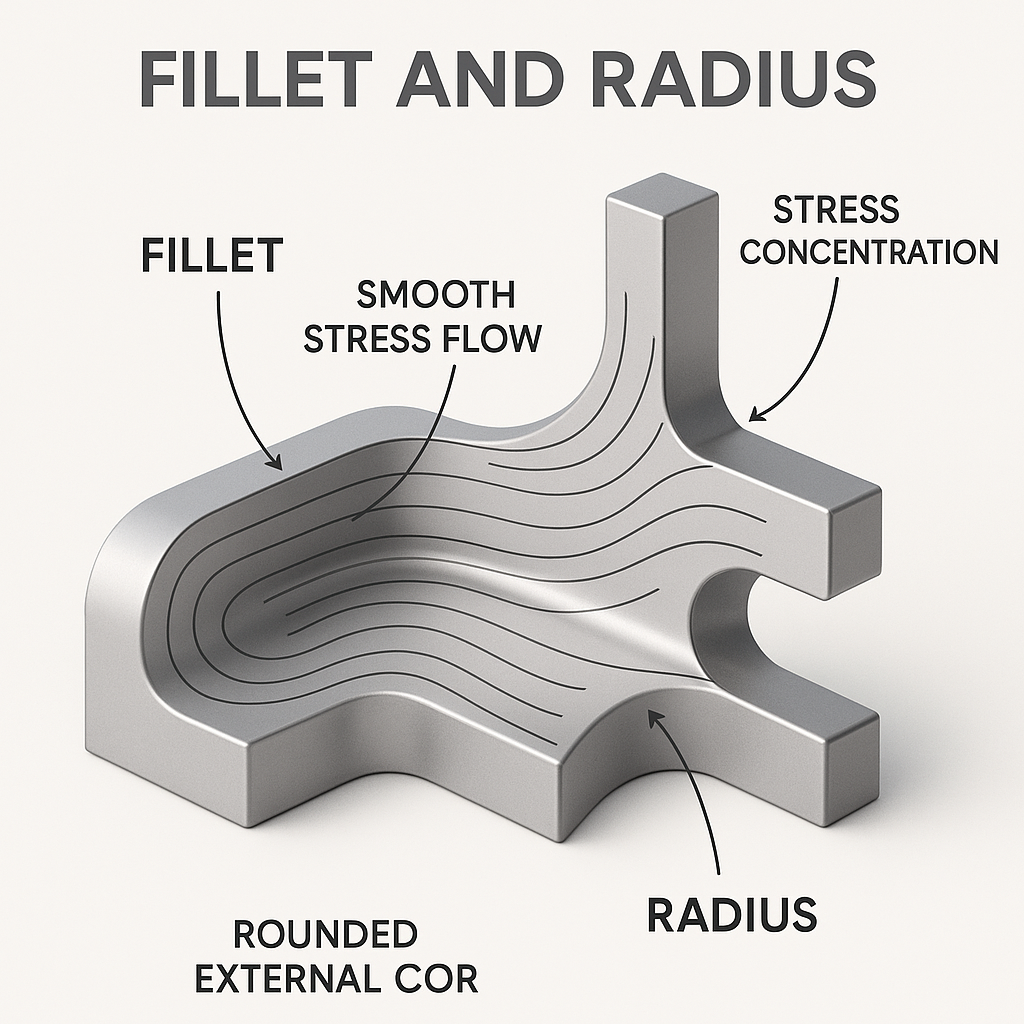
What is the role of rounded corners?
Fillets are rounded internal corners, while radii are rounded external ones. The bottom line is… sharp corners act as stress concentrators, creating weak points where cracks can form. Rounded corners distribute stress evenly.
How do they improve metal flow?
Sharp corners create turbulence as molten metal flows, which can trap air and cause porosity. Generous fillets and radii ensure a smooth, laminar flow for a stronger part.
- Reduces stress concentrations.
- Improves molten metal flow and fill.
- Strengthens the final part significantly.
- Prolongs the life of the investment casting tooling .
Designing with curves
Key Takeaway: Use fillets and radii liberally wherever surfaces meet to strengthen your part, improve castability, and reduce manufacturing defects.
| Feature | Function | Benefit | |
|---|---|---|---|
| Fillet | Rounded internal corner | Reduces internal stress | |
| Radius | Rounded external corner | Improves metal flow |
6. Bosses in Your Aluminum Die Casting Design Guide
Bosses are raised cylindrical features used for mounting, locating, or assembling parts. When designed correctly, they can eliminate the need for secondary drilling operations.

How do you design bosses for mounting?
These protrusions act as standoffs or points for screws and fasteners. But there’s a catch: if not designed carefully, a solid boss creates a thick mass of material that can lead to defects like porosity or sink marks.
How do you maintain wall thickness?
The best practice is to core out the boss to maintain the part’s uniform wall thickness. This prevents defects while retaining structural integrity.
- Core out the boss to prevent thick sections.
- Add generous fillets where the boss meets the part wall.
- Incorporate ribs for added strength and support.
- Ensure proper draft for easy ejection from the mold.
Effective boss design
Key Takeaway: Design bosses to be cored out and reinforced with fillets and ribs to maintain uniform wall thickness and prevent casting defects.
| Design Element | Purpose | |
|---|---|---|
| Cored Hole | Maintain uniform wall thickness | |
| Fillets/Ribs | Increase strength & reduce stress |
7. Ribs in Your Aluminum Die Casting Design Guide
Ribs are thin, wall-like features that add strength and stiffness to your part without increasing its overall wall thickness. They are a highly efficient way to improve structural performance.
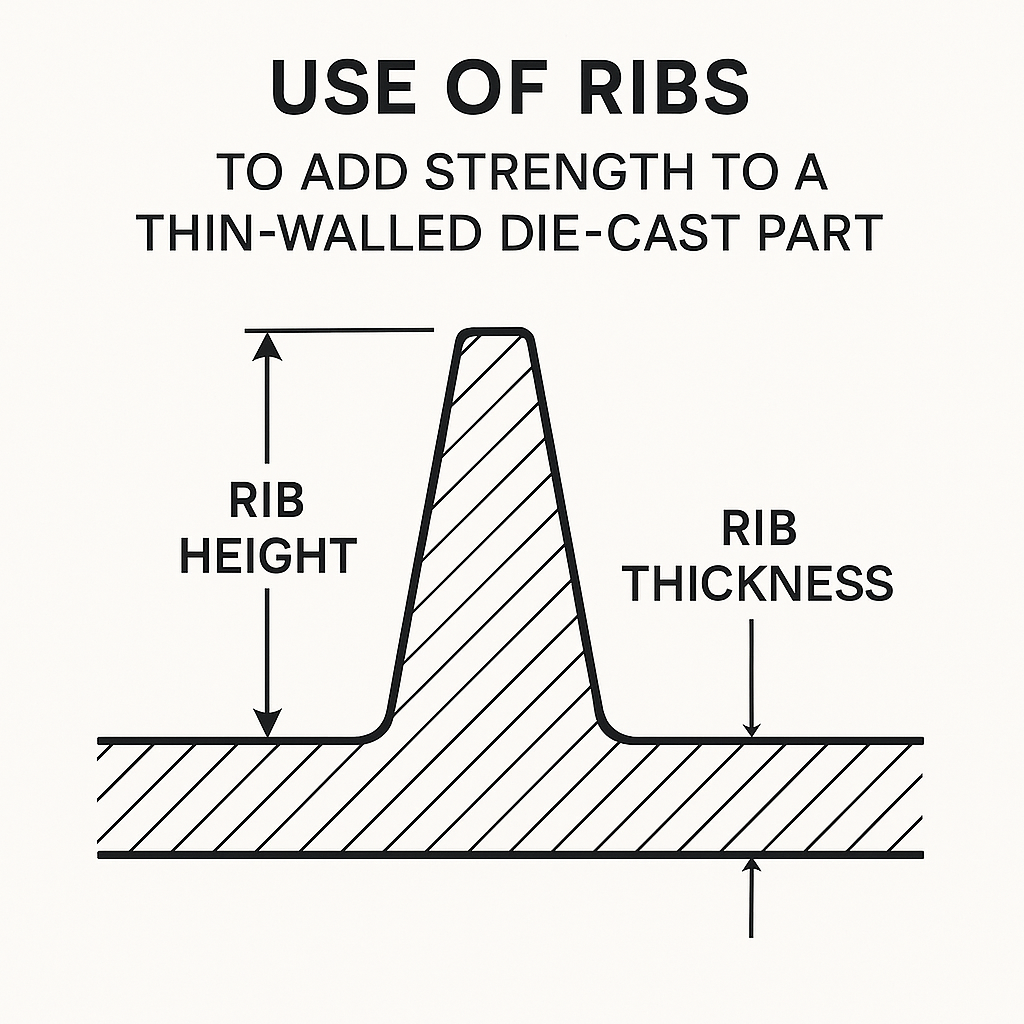
How do ribs add strength?
Ribs act as small bridges, providing structural support to walls and flat surfaces. Here’s something you might not know: they can also act as flow channels, helping molten metal reach thin or remote sections of the mold.
Why use odd numbers of ribs?
To prevent stress from concentrating on adjacent features, it is best to use an odd number of ribs or offset them. This helps distribute loads more evenly. Key benefits include:
- Increased strength and stiffness with minimal weight.
- Improved molten metal flow into thin sections.
- Reduced material usage and part cost.
Strategic rib placement
Key Takeaway: Use ribs to achieve maximum strength with minimum material, but design them carefully with proper draft and fillets to avoid creating new stress points.
| Rib Design | Rationale | |
|---|---|---|
| Height/Thickness Ratio | Keep ribs thinner than main walls | |
| Connect to Walls | Reinforces part structure effectively |
8. Undercuts in Your Aluminum Die Casting Design Guide
An undercut is any feature on a part that prevents it from being ejected in a straight line from the die. These features significantly increase the complexity and cost of the tooling.
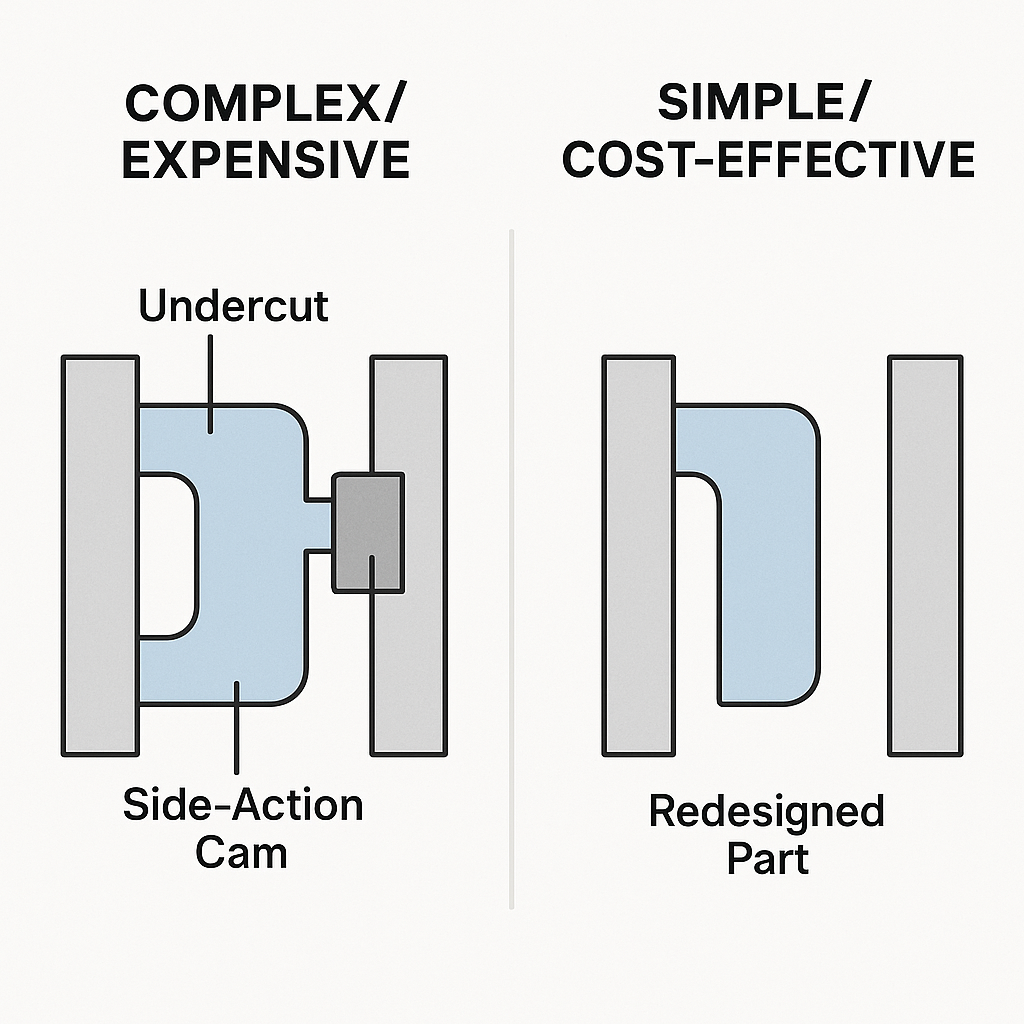
What is an undercut?
Features like side holes, grooves, or recessed surfaces that are not parallel to the die’s opening direction are considered undercuts. So, what’s the solution? The best approach is to avoid them entirely through clever design.
How can you design around them?
If an undercut is unavoidable, it requires complex tooling with side-actions or slides to form the feature and retract before ejection. This dramatically increases cost.
- Best: Redesign the part to eliminate the undercut.
- Alternative: Adjust the parting line to “free” the feature.
- Last Resort: Use complex, expensive side-action tooling.
Managing undercut costs
Key Takeaway: Avoid undercuts in your design whenever possible. If one is absolutely necessary, be prepared for a significant increase in tooling complexity, cycle time, and cost.
| Undercut Solution | Cost & Complexity Impact | |
|---|---|---|
| Redesign to Eliminate | Low (Ideal) | |
| Use Side-Action Tooling | High |
9. Holes in Your Aluminum Die Casting Design Guide
Designing holes and windows directly into the casting is a key DFM (Design for Manufacturability) principle. This approach eliminates costly and time-consuming secondary machining operations like drilling or milling.
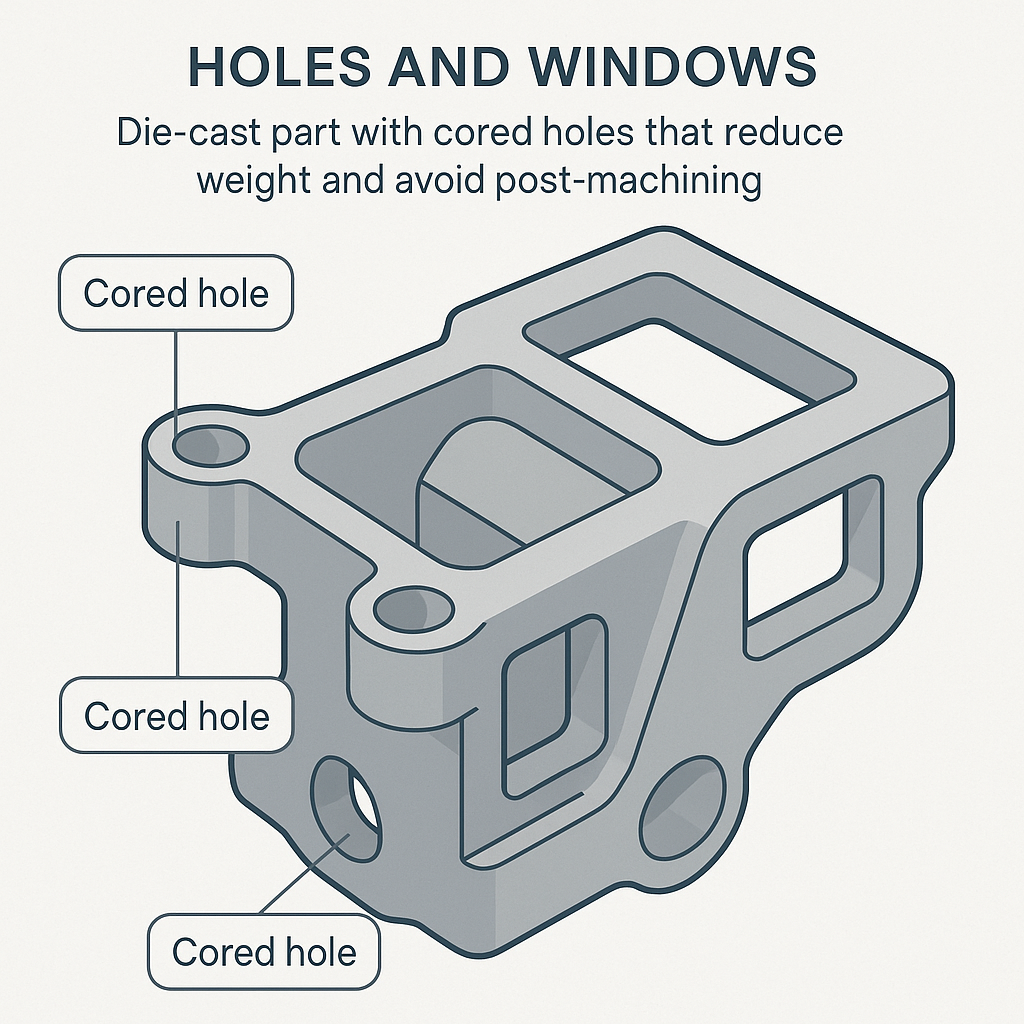
Why design holes in the mold?
Incorporating these features into the die tooling creates “net-shape” or “near-net-shape” parts. The good news is… this dramatically speeds up production and lowers the final part cost by reducing post-processing steps.
How can you reduce post-mold machining?
By using core pins in the die, you can create precise holes without ever touching a drill. However, you must still consider a few key factors for success:
- Holes can affect metal flow; position them carefully.
- Add fillets to hole edges to reduce stress.
- Incorporate draft on through-holes for easy pin retraction.
Smart hole and window design
Key Takeaway: Design holes and windows into your part from the beginning to drastically reduce secondary CNC machining costs and overall lead times.
| Feature | Purpose in Design | |
|---|---|---|
| Cored Holes | Eliminate post-casting drilling/milling | |
| Fillets on Edges | Improve metal flow and reduce stress |
Your Die Casting Design Guide Partner
Partnering with an experienced manufacturer ensures your thoughtful design translates into a flawless finished product. An expert can provide DFM feedback to optimize your part before a single tool is cut.
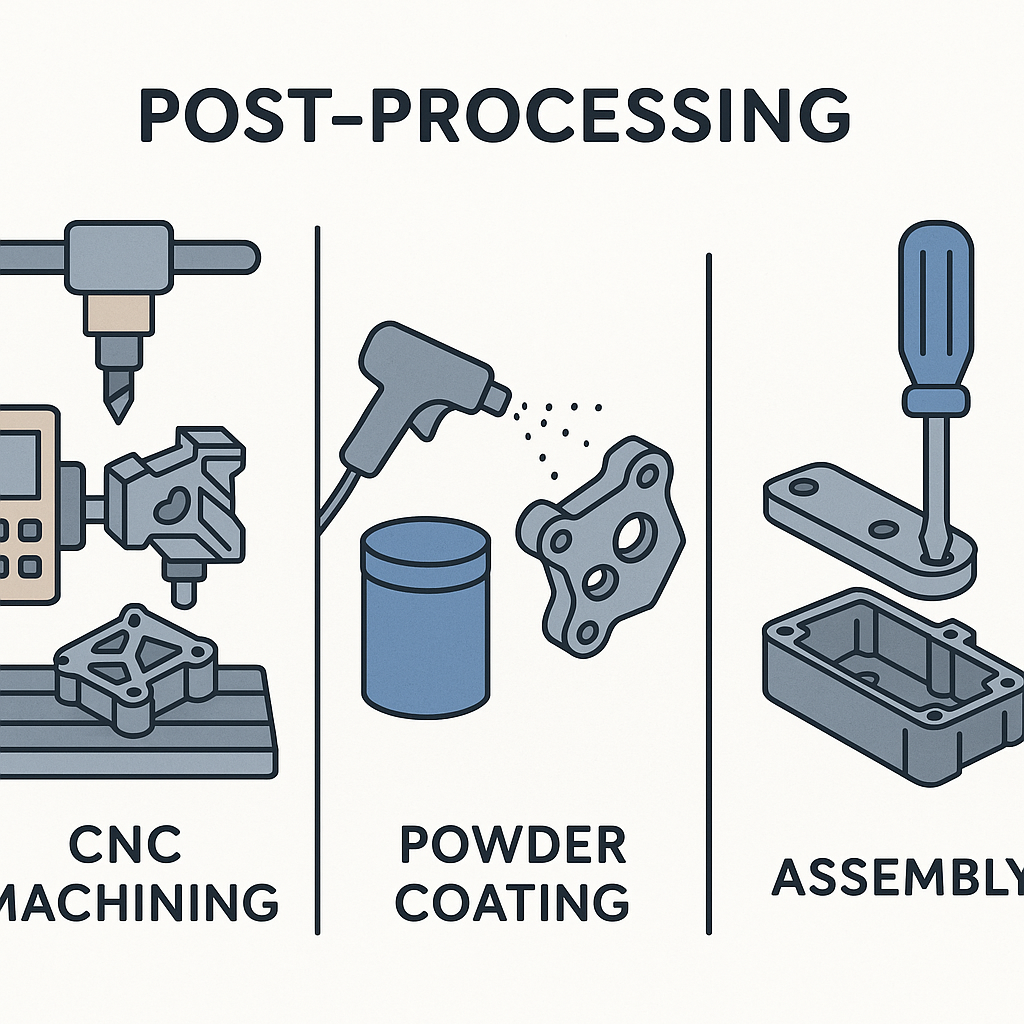
Bringing it all together
Mastering these nine considerations—from parting lines to cored holes—is the key to transforming a concept into a high-quality, cost-effective manufactured part. This DFM approach bridges the gap between design and reality.
How can PrecisionVast help you?
At PrecisionVast, our team of experts can guide you through these design challenges. With over 20 years of experience, we turn complex designs into precision castings. Ready to get started? We offer a one-stop solution from design review to finished part.
Conclusion
You now have the knowledge to avoid common aluminum die casting pitfalls like shrinkage defects, ejection issues, and unnecessary secondary machining. This guide empowers you to design for manufacturability, ensuring your parts meet the highest investment casting tolerance .
At PrecisionVast, we are more than just a manufacturer; we are your partner. Our vision is to be Your Partner Supplier for Investment Casting, providing expert DFM feedback to optimize your parts for cost, quality, and performance.
Ready to ensure your design is flawless? Contact PrecisionVast today for a free project review and quote!
Frequently Asked Questions (FAQ)
1. Can I use undercuts in my aluminum die-cast design?While technically possible with complex tooling, it is highly discouraged as it dramatically increases tooling costs and cycle times. The best practice is to modify your design to eliminate undercuts wherever possible.
2. What’s the best way to add strength without adding much weight?Use well-placed ribs and generous fillets at feature intersections. These add significant structural integrity with minimal material, keeping your part strong and lightweight.
3. How thin can I make the walls of my aluminum part?This depends on the specific alloy and overall part size, but uniformity is more important than absolute thinness. Overly thin walls risk incomplete mold filling, while thick sections can cause defects like sink marks.
4. What aluminum alloy is best for my project?The best alloy depends on your application’s needs (e.g., strength, corrosion resistance, pressure tightness). Alloys like A380 are very common, but it’s best to consult with our experts to select the ideal material for your project.
5. How can I reduce the cost of my die-cast part?To reduce costs, design for manufacturability. Focus on uniform wall thickness, avoid undercuts, use generous fillets, and design holes directly into the part to minimize secondary machining.
